Ultimate Guide to Black Diamonds – With Insider Buying Tips!
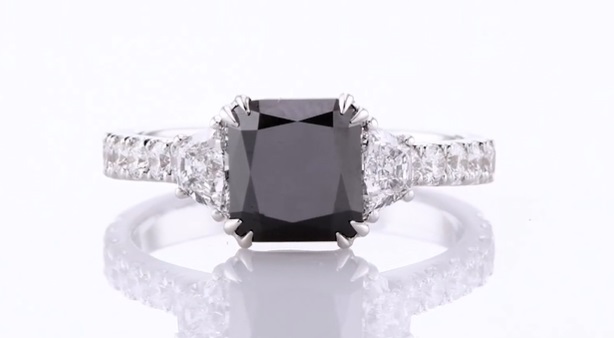
A gorgeous black diamond ring with sidestones and paved shanks – Leibish.
In recent years, black diamonds have grown greatly in popularity and are used in a wide variety of jewelry. Thanks to their bold, unique appearance and endorsements by celebrities, they have been elevated from cast-asides into starring roles.
In this write-up, we will do a deep dive into the world of black diamonds. You will find out what they are, the symbolic meaning they represent and interesting facts about them. I will also reveal the 3 most important things you need to know before shopping for a black diamond and the best places to buy one.
Let’s jump right in…
Here is a list of topics we will be covering:
- What is a Black Diamond? Are They Real Diamonds?
- The Symbolism of Black Diamonds And Their Meaning
- How Rare Are Black Diamonds?
- How Much Does a Black Diamond Cost?
- 4 Fun Facts You Probably Didn’t Know
- Top 4 Most Famous Black Diamonds in History
- 3 Things to Look Out For When Buying a Black Diamond?
- The Best Black Diamond Engagement Ring Designs We Love
- Where is the Best Place to Buy Black Diamonds?
- Summary – Let’s Wrap Things Up!
What is a Black Diamond? Are They Real Diamonds?
A natural color black diamond is also known as a carbonado, which is a Portuguese term for opaque, dark diamond. From a gemological standpoint, a carbonado is a raw form of polycrystalline diamond that is composed of amorphous carbon, graphite and diamond.
If that sounds too technical to understand, you can simply think of a black diamond as a big clump of diamond dirt where a mish-mash of graphite, carbon and diamond crystals are grown together.
Compared to other colored diamonds, black diamonds do not get their color from chemical impurities (e.g. nitrogen impurities cause yellow tints while boron causes blue hues) in their crystalline structure. Instead, naturally black diamonds get their color from the massive amounts of mineral inclusions that extend throughout the entire stone.
Because of their opaque nature, black diamonds do not display the sparkle or brilliance that we normally associate a diamond with. Instead, they display an “adamantine” luster which gives them a shiny appearance.
The Symbolism of Black Diamonds And Their Meaning
A superb looking wedding ring with interwoven rows of white and black diamonds.
It is believed that black diamonds were a form of protection from evil and carbonados had cleansing powers to remove bad luck. In some societies, these dark gems were also viewed as a communication tool between the spiritual and physical world.
Some people also believe that black diamonds symbolize charisma and had powers to help you shape your future. In this regard, black diamonds are also connected with inner strength and passion.
In Asian culture, the color black is often associated with bad luck and death. As you can imagine, black diamond jewelry isn’t that well received in this part of the world. At the end of the day, whether a black diamond has a positive or negative meaning really depends on the society we live in.
How Rare Are Black Diamonds?
Compared to other fancy colored diamonds with pink or green hues, black diamonds aren’t as rare but that doesn’t mean that these stones are easily found in mines around the world. In fact, natural black diamonds are only found in Brazil and central Africa.
This may come as a surprise since black diamonds are often classified as low quality industrial diamonds (bort) that are abundant in nature. However, diamonds (carbonado) that have an extremely high amount of inclusions and clusters of graphite are relatively rare compared to colorless diamonds.
How Much Does a Black Diamond Cost?
When it comes to prices, it largely boils down to demand and supply. In the market, there are 2 types of black diamonds that you will come across – natural or treated black diamonds.
Most of the black diamonds that are sold are often heat-treated and these diamonds are extremely cheap. You can easily get a 1 carat enhanced black diamond for as low as $100 to $200 per carat.
In contrast, natural black diamonds that are certified by GIA can fetch prices between $1,000 to $3,000 per carat depending on its carat weight. This makes them an affordable alternative to colorless diamonds which can cost a lot more depending on the quality of the 4Cs.
4 Fun Facts About Black Diamonds You Probably Didn’t Know

#1 No one can agree on how they were formed – While colorless diamonds can be found on every continent, black diamonds are only found in 2 parts of the world: Brazil and Central Africa. Due to their limited locations in alluvial deposits, scientists and geologists are divided over their origins.
Three of the most compelling theories involve the remnants of asteroids that hit the Earth’s surface, irradiation and special formation conditions deep within the Earth which create black diamonds.
#2 They are tougher than normal diamonds – Carbonado’s polycrystalline structure allows it to endure higher stress and prevent cleavage compared to a normal diamond. Cutting tools that are made with black diamonds have better lifespans and are suitable for high performance grinding applications.
#3 They absorb light instead of reflecting it – Black diamonds are more porous than other types of diamonds and their polycrystalline structures cause them to absorb light instead of reflecting it.
#4 They’ve become popular with men – Due to their bold, striking look, black diamond jewelry have a very contrasted look that makes them stand out and are increasingly popular with men. Justin Bieber is the latest celebrity who was seen wearing black diamond earring studs.
Top 4 Most Famous Black Diamonds in History
Black diamonds have always captivated people around the world because of their dark, mysterious looking color. Check out the top 5 most spectacular and historically important stones below.
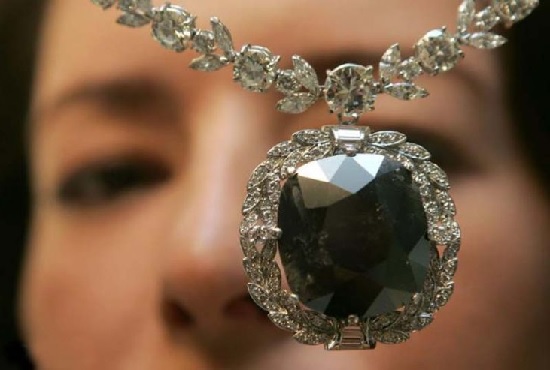
#1 Black Orlov – Perhaps the most famous black gemstone of all time, the Black Orlov is a 67.50 carat cushion cut diamond that was believed to be cursed. Legend has it that the Black Orlov was carved out from a sacred statue in a Hindu temple located in South India.
Three previous owners including a Russian princess called Nadia Vyegin-Orlov jumped to their deaths mysteriously. The curse was eventually broken when Charles Winson bought the diamond and had it cut into smaller pieces.
#2 Spirit of de Grisogono Diamond – The world’s largest polished black diamond that weighs in at a hefty 312.24ct. The Spirit of de Grisogono Diamond is named after the Swiss cutter who polished the diamond. It is fashioned in an old Moghul-cutting style and is mounted in a splendid white gold ring that resembles a large ice-cream cone.
#3 Korloff Noir Diamond – This gorgeously stunning 57 facet black gem weighs in at 88 carats and is currently owned by the Korloff company in Paris. The legendary diamond is reputed to bring happiness, good luck and prosperity to people who have come into contact with it.
#4 The Rembrandt – Cut from a 125-carat rough diamond, the Rembrandt diamond took more than 3 years to cut and polish. The final polished stone weighs in at 42.27 carats and was presented by Rembrandt specialist Gary Schwartz. The diamond is currently in the possession of the Diamant Museum Amsterdam where it is on display.
3 Things to Look Out For When Buying a Black Diamond?
Evaluating and choosing a black diamond to purchase is more of an art rather than a science. Similar to other types of diamonds, there are a variety of shapes that black diamonds are cut to and there is a lot of subjective preferences involved in a selection.
Personally speaking, there are 3 important things I look out for when buying a black diamond.
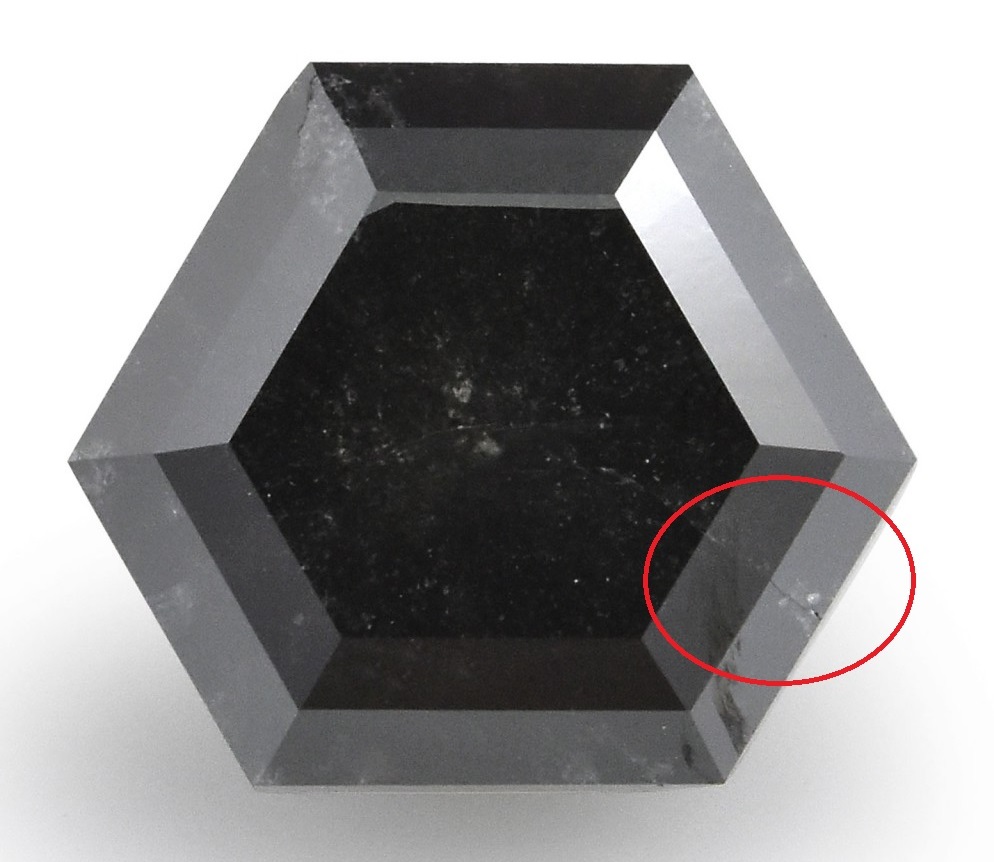
A large feather (crack) that extends inward from the girdle.
#1 Surface reaching inclusions – Black diamonds are inherently full of inclusions and because of this, cutting and polishing them can be difficult. In fact, it is almost impossible to achieve a high level of smooth polish because of the inclusions present.
It is common to see facets that are pitted or covered with polish drag lines due to the abundance of cleavages, fractures and inclusions that break to the surface of the diamonds. If these surface-reaching inclusions are minute, they shouldn’t pose a problem.
Feel free to click on the images above to view full details and play around with the interactive video listing.
However, when there are large feathers or cracks along the girdle of the diamond, it could become vulnerable to chipping and I would generally avoid such stones. Diamonds with a significant amount of polish drag lines should also be avoided as it affects luster negatively.

Fancy black diamonds can come in different variations and appearances.
#2 Internal characteristics – When judging the quality of a black diamond engagement ring, you can’t use the same criteria of the 4Cs as colorless diamonds. Traditionally, people tend to prefer “less color” and “better clarity” in a colorless diamond engagement ring but the opposite is true for black diamond rings.
For fancy color diamonds, more color is generally better and the color distribution should ideally be even throughout the stone. And this is where the internal characteristics of a fancy black diamond come into play.
Natural black diamonds can look uniquely different from one to the other depending on the specific type of inclusions it has and how it was polished. This leads to a wide range of appearances like opaque, smoky, semi-transparent, or even having inclusions that stand out from the dark contrasting hue.
Personally speaking, I tend to prefer black diamonds that are opaque and look uniformly dark. If a diamond had a big amount of inclusions that are too whitish, it can create a non-uniform appearance that I find distracting.
#3 Reliable grading report – The vast majority of black diamonds that are used in jewelry and engagement rings are heat-treated to give them a dark looking appearance. Most of these heavily included diamonds start off as gray/white color before undergoing high temperatures to graphitize their inclusions.
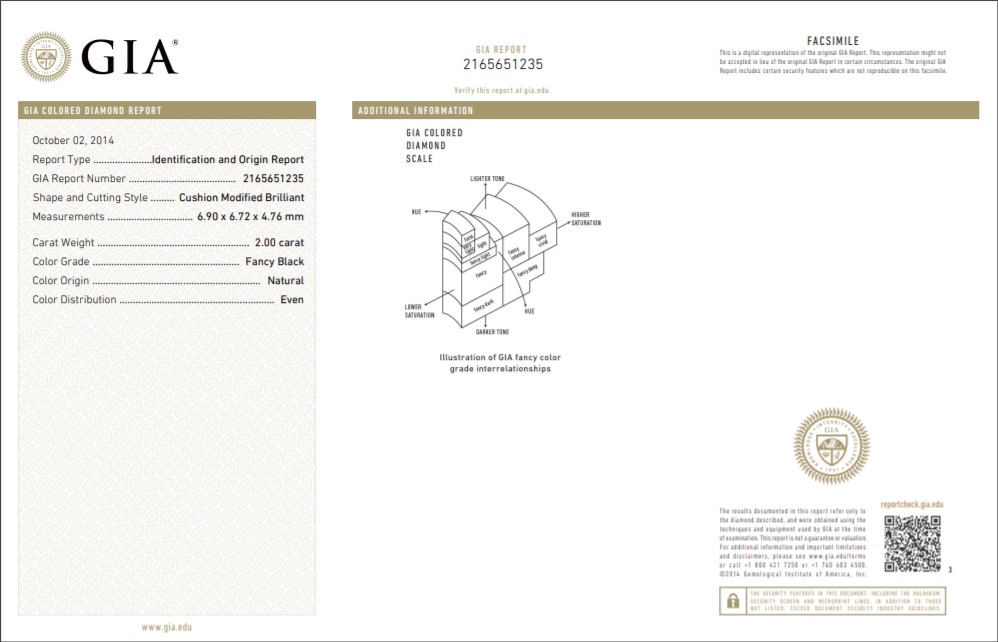
The GIA Identification and Origin report will provide assurance that you are buying a real, natural black diamond.
If you are looking for a real, natural fancy black diamond, you should only buy one that comes with a GIA certificate. Don’t believe anyone who claims to be selling a real black diamond (regardless of any marketing fluff they claim) if it doesn’t have reliable documentation and assessment from GIA.
In fact, a common scam that unethical jewelers use is to provide a dubious report or claim that the stone you are buying is a “natural diamond”. It’s a play with words because it refers to a naturally mined diamond that is treated to take on a black color hue.
Don’t get me wrong. There’s nothing wrong with buying an irradiated or heat treated diamond as long as the enhancements are disclosed in a transparent manner. The prices should realistically reflect the type of diamond you are buying and you shouldn’t overpay for an enhanced diamond.
The Best Black Diamond Engagement Ring Designs We Love
There are several reasons why black diamond engagement rings have been gaining popularity with buyers. Not only do they offer a bold and unique looking variation of popular white diamond rings, but they are also significantly less expensive!
In my opinion, a black diamond engagement ring garners a lot of attention because of the fantastic contrast it creates with a white metal setting. The combination of a black center stone and white color melee diamonds can also lead to creative and striking results.
Here are some of my favorite ring designs that I’ve come across and if you want to view full details of any ring setting, simply click on the images or corresponding links.
A magnificent 18k white gold halo ring that is customized to fit the cushion cut black diamond perfectly, this setting also provides a backdrop of brilliance with its open style pave shank. The halo that encircles the center stone also highlights the outline of the diamond without overpowering it.
Sometimes, less is more when it comes to jewelry design. For people who love minimalistic styles, this classic 4 prong solitaire ring is an affordable choice to showcase a black colored diamond. 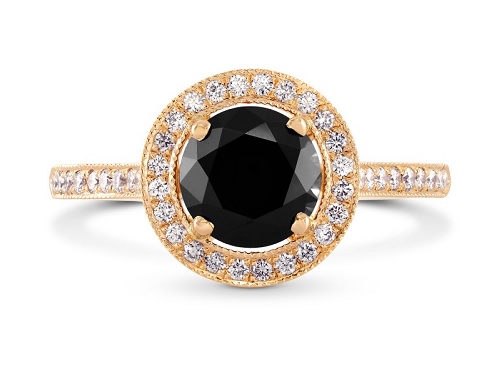
This yellow gold ring has a halo and closed pave setting that encircles the black gemstone in the center. The milgrain finish at the edges of the ring gives it a vintage vibe that stands out from modern designs.
This majestic looking ring features a mesmerizing double halo that offers a lot of finger coverage when worn. With an open pave double halo and split shank designed to allow light to enter, you will get a dazzling display of sparkle from the ring.
Designed in the shape of a flower, this elegant ring is made of 18k rose gold and has petals that are made of white color melee diamonds. The color contrast is simply outstanding and the symbolic meaning behind this ring represents your love for the recipient.
Sitting in the middle of this pave split shank ring is an unheated fancy black cushion diamond that is secured in place with double claw prongs. The split shank creates a leading line towards the center stone that draws the viewer’s attention towards it.
A bold and powerful-looking men’s ring that is set with a 3.42 ct natural black diamond, this bezel setting has broad looking shanks to create a masculine appearance. It is ideal for guys who are looking for a fashionable wedding ring and want something unique looking.
Where is the Best Place to Buy Black Diamonds?
Natural fancy black diamonds are relatively rare compared to other fancy color diamonds and you will seldom see them being sold in physical retailers or even on some of the bigger online vendors.
As a consumer, the biggest problem you are going to face is telling the difference between a natural and a treated diamond. The visual differences are difficult to tell apart even for a more seasoned buyer and it doesn’t help that the majority of black diamonds in the market are enhanced.
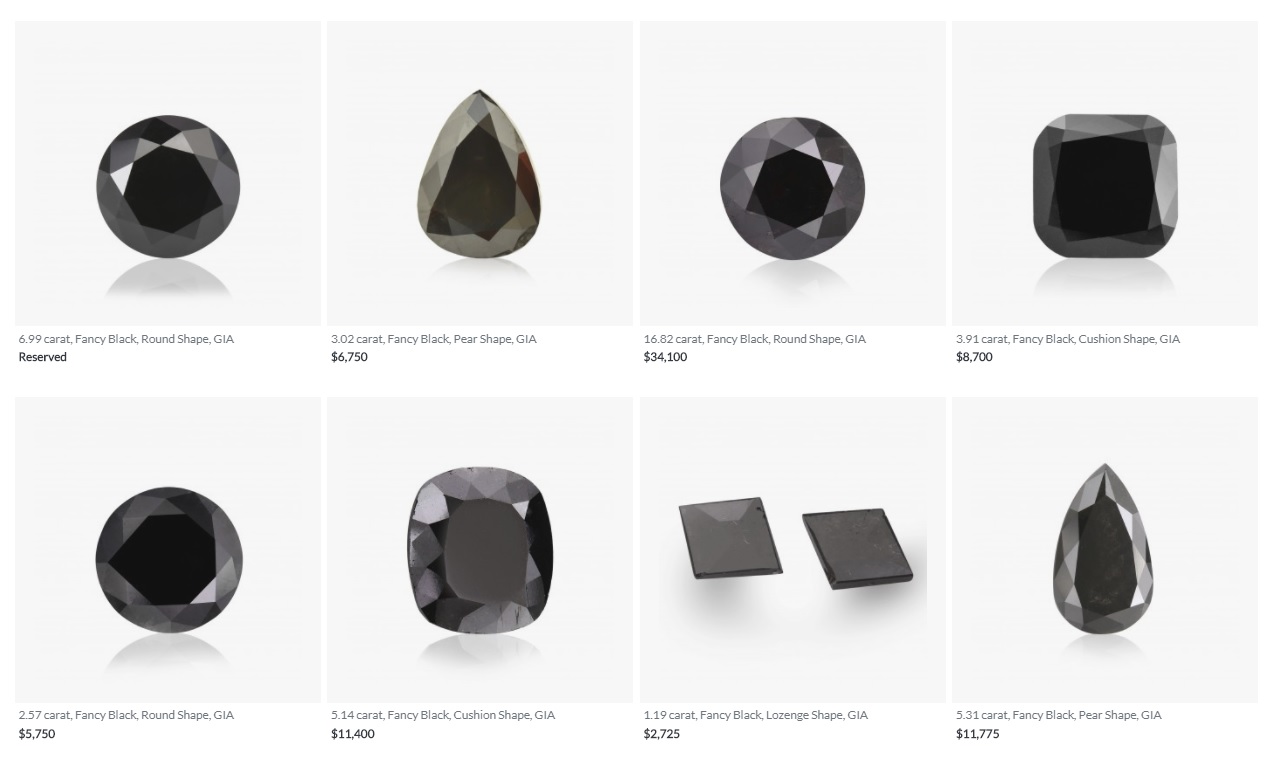
A variety of loose black diamond listings cut in different shapes and sizes can be found at Leibish.com.
In my opinion, the best place to buy natural fancy black diamonds is Leibish & Co. This is a vendor that specializes in fancy color diamonds and have a superb selection of GIA certified diamonds. On top of that, they are really transparent with data and will provide videos/magnified photos to help you see exactly what you are buying.
What I really like about them is the depth of selections available and the competitive prices they offer. Leibish is also really good at making settings that complement a colored diamond and let me tell you that their craftsmanship standards are top-notch.
In fact, I’ve personally purchased a fancy yellow diamond ring as a mystery shopper and was so impressed with the ring that I decided to gift it to my wife. You can read the full review of the purchase I made and also see close up pictures of the ring’s workmanship in this article.
James Allen is another vendor that I highly recommend if you are looking for black diamond jewelry and they are well-known for their highly interactive video listings. They sell both natural fancy black diamonds (with GIA certs) and also rings with treated diamonds (these are fully disclosed).
James Allen also offers significantly better prices compared to physical retailers because of their lower operating expenses.
Summary – Let’s Wrap Things Up!
I hope you found this article useful and have gained a better understanding of black diamonds and what they are. Black diamonds offer a unique appearance from other colored diamonds and they can appeal to both men and women.
Whether it is set into a men’s wedding ring or a diamond engagement ring for a lady, black diamond rings are ideal for people who want to make a bold fashion statement or simply want something that stands out from the crowd.
While natural black diamonds can be a little tricky to look for and buy, you should only buy one that comes with a GIA certificate. If you are in the market for a treated black diamond, make sure you are paying the correct prices and keep a lookout for the diamond’s quality.
Now, I want to hear from you. Would you personally buy a black diamond for a piece of jewelry and why? Leave a comment to let me know! Lastly, if you need help or further advice in making a selection or finding a diamond, feel free to email me directly. Good luck with your search!
Related Articles
Leave A Comment

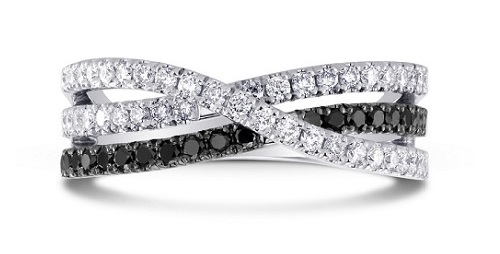
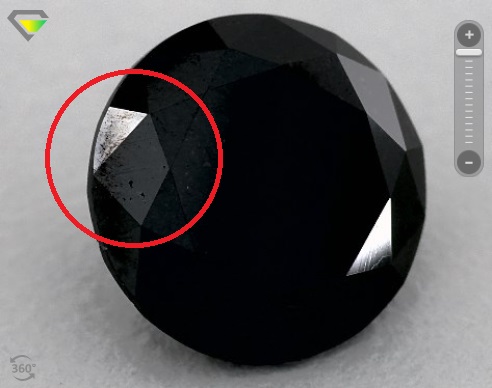
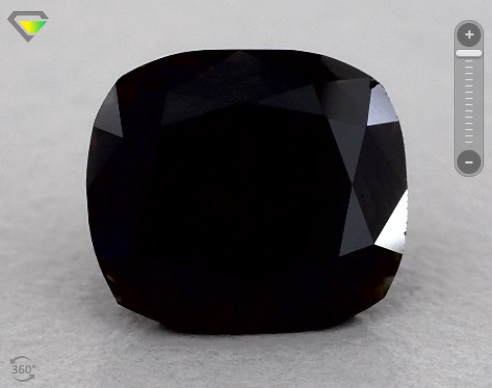
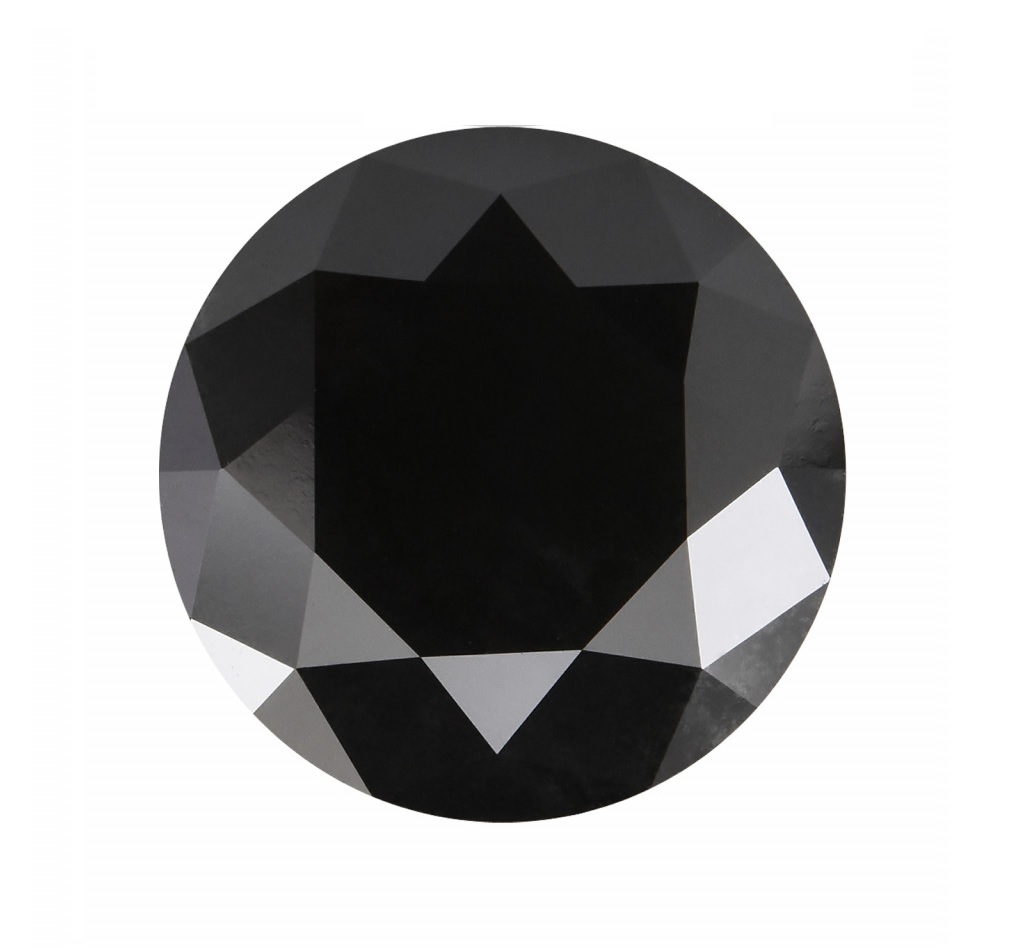
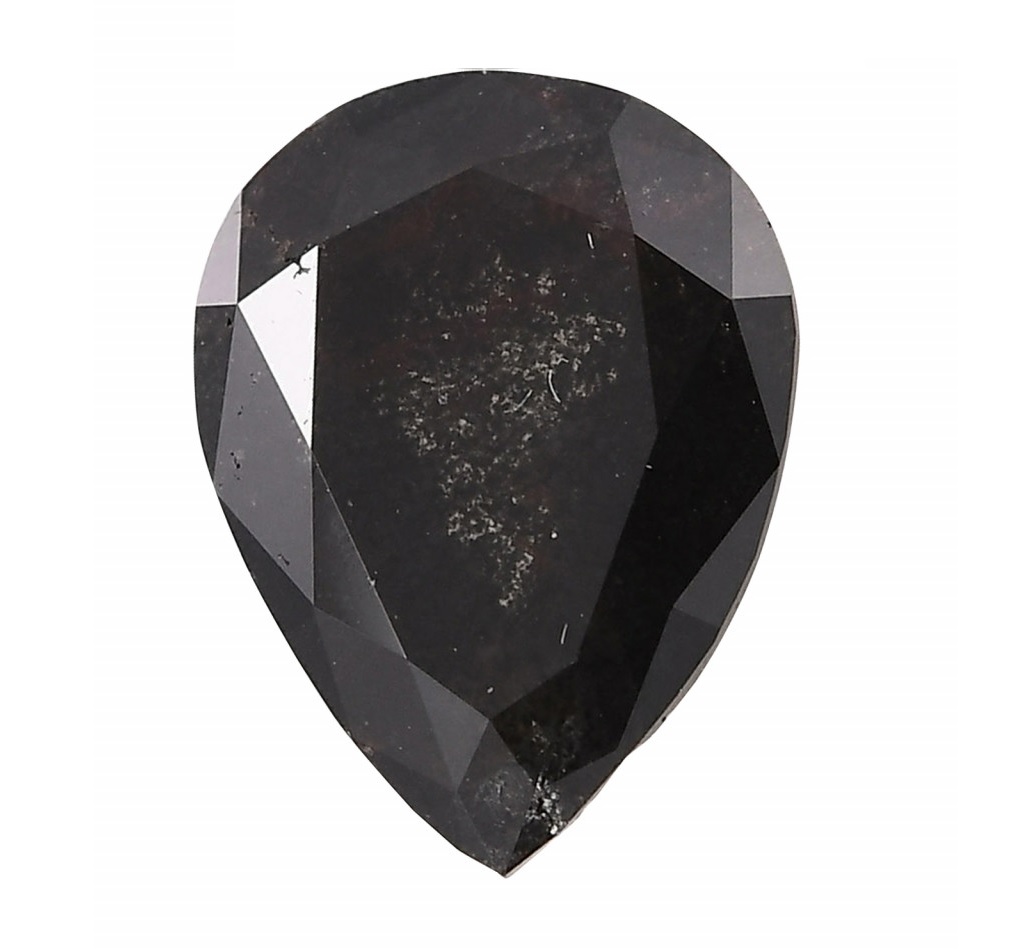
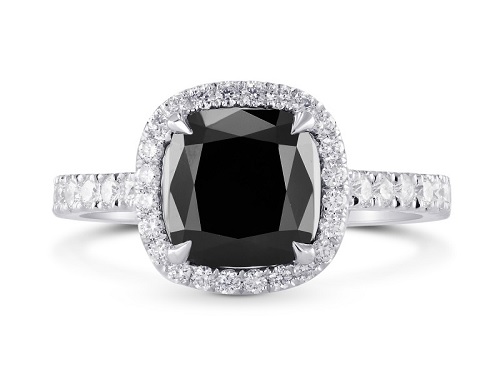
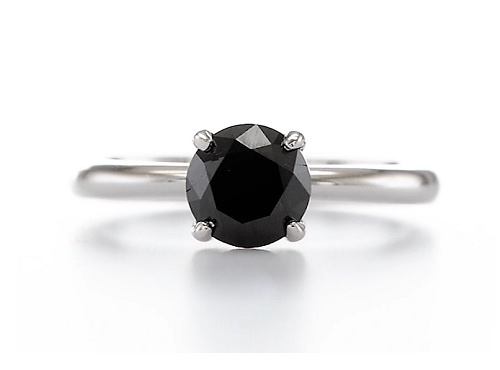
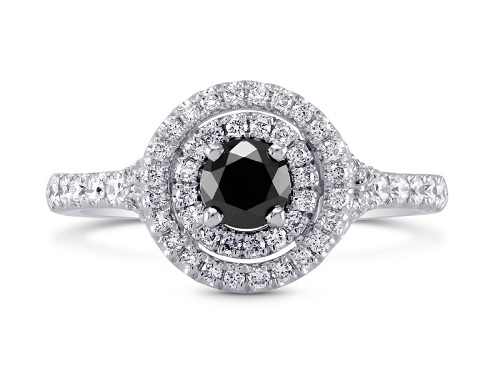
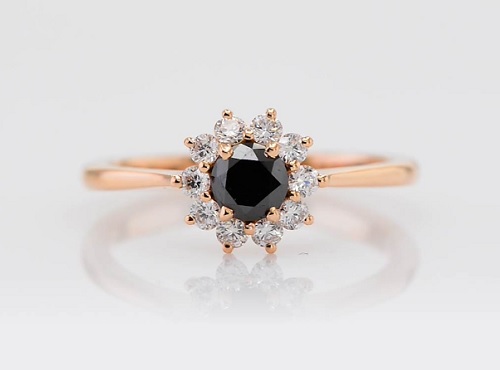
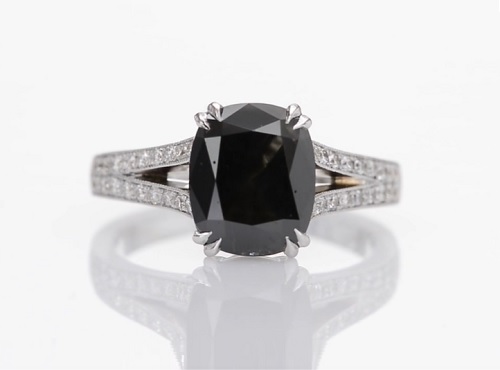
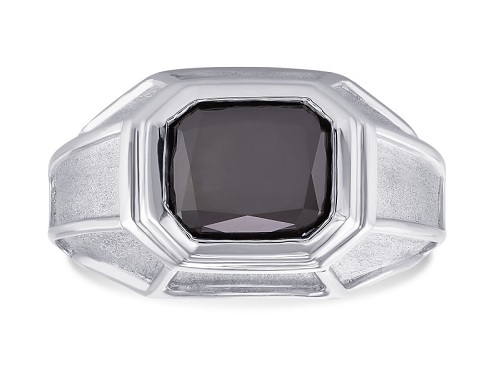
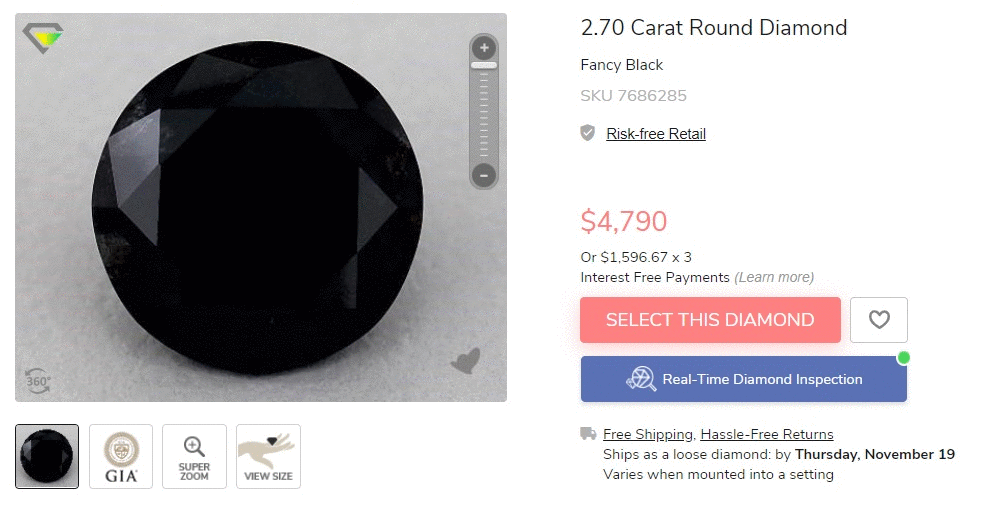
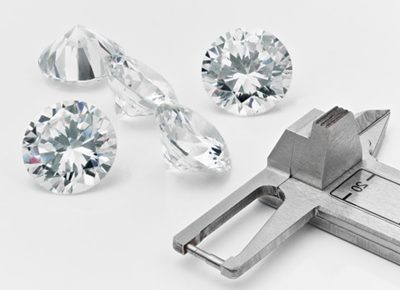

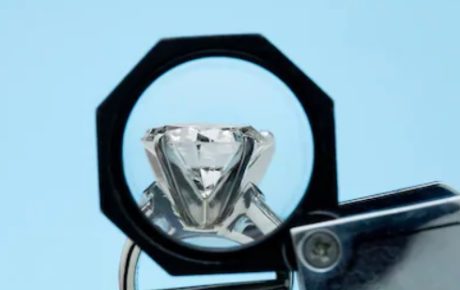
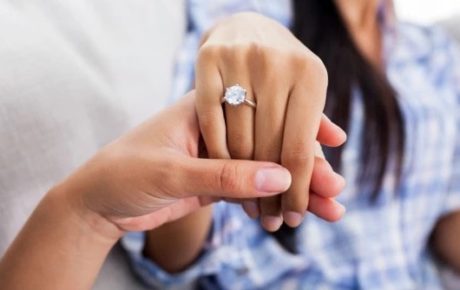









12 Comments
I’ve look at both brown and black diamond jewelry information online and was wondering why there isn’t any clarity grade in the GIA reports for the latter. Some of the GIA certified brown diamonds I have seen have clarity listed as SI2 or VS2 and I am wondering why this isn’t available for black diamonds.
GIA offers colored diamond grading reports with different levels of details at different prices. If a vendor decides to send a diamond for grading, they will do it for the one that helps that market their products in the best light.
Carbonado, which is another name for black diamond, is basically a clump of diamond dirt. The black color actually comes from inclusions that are so abundant and clustered that it absorbs light to make the diamond look opaque and dark.
If a black diamond were to be graded for clarity, I can tell you it is going to end up with an I3 rating and that’s the worst possible rating that a diamond can receive. So, what’s the point of spending the extra cost for such a report? Instead, when it comes to carbonados, the seller will usually request the less expensive GIA report just to ascertain it is of natural origins and to evaluate its color distribution.
For brown diamonds, if a diamond has good clarity, then vendors will obviously request a more detailed report. If the brown diamond has terrible clarity, then they will not get the report with a clarity rating which simply highlights the imperfections the diamond has. Basically, it’s a game that sellers play and as a consumer who’s buying fancy colored diamonds, you need to be aware of how the industry works.
I’ve read that fancy colored diamonds can hold and appreciate in value in the long term. Do you think black diamonds are a good investment that can give me a high return on investment? Are black diamonds popular among investors?
If you are buying a record breaking diamond from Sotheby’s auction or one that is exceptionally large in carat size, then I would say yes. Otherwise, you will likely lose money if you view diamonds as investments. Black diamonds are not rare even if we go to the 5 carat size range. So, how much is a black diamond worth? Well, for it to make sense as an investment, it has to be really large in carat size or have a rich history behind the stone. In terms of popularity, red and pink diamonds are viewed as better investments.
I’ve come across an eBay listing for a cheap black diamond that states that the stone isn’t heat treated and the stone has good clarity. There’s no documentation but there are good reviews of the store and that the diamond is of natural origin. When I asked for a GIA grading report via messaging, the seller replied that the GIA certificate would cost a few hundred dollars and it would unnecessarily increase the cost.
There’s quite a number of red flags because a real black diamond will be choke full of inclusions and the diamond is likely irradiated. Basically, irradiation is another form of treatment to turn a lighter color diamond so dark that it appears black. Unlike an authentic stone which gets its black color because of the inclusions it has, the seller is trying to prey on people who don’t know better. It’s a lame excuse to use the cost of a GIA certificate as a reason for selling an uncertified diamond. The truth is, if the stone was real, the seller would be able to pass the cost of the GIA report into the price and this will be absorbed by the buyer which is a win win situation. A GIA report offers an identification and origin report which tells the buyer whether the color hue is natural or treated. The GIA report creates trust between different parties instead of relying on the words of the seller with a vested interest to make a profit of a buyer’s naivety.
I’ve read that the grading scale for black diamonds can be separated into 4 grades: AAAA, AAA, AA and A. The top 2 tiers are natural and unheated diamonds with the difference being in color distribution. AA and A refers to heat annealed diamonds that are turned to charcoal black artificially. These cost less which begs the question: are black diamonds real if they are rated as AAAA. Are you familiar with this grading scale? And by the way, the black diamond meaning in our culture represents strength and unity.
I am not familiar with this and it sounds very much like buying a CZ or colored gemstone on eBay where sellers use their own methods to assign “grades” according to quality. If I were paying top dollars for an AAAA diamond, I won’t trust what the seller claims and would demand to see a GIA report that provides an unbiased opinion about the diamond.
If GIA offers a clarity grading scale or an identification of the depth of hue, why isn’t this done for black diamonds? From what I see in the images above, it seems like fancy black can exist in a variety of intensities like fancy intense or fancy vivid colors.
I did have my education at GIA’s college so I do know why they only offer a limited report. First of all, you need to understand that the nature of a black diamond is that they are extremely included. If you asked me, they are all in the category of I3 grade (or worse!) if they could be assigned a clarity grade. Because of their limited transparency, it makes grading extremely difficult for symmetry and there is no variation in saturation for a black color diamond. Instead, GIA only offers an assessment of whether the diamond has been treated or not using their high tech equipment and also a measurement of the basic dimensions and weight.
What do you think of this unique looking black diamond gemstone? It has a GIA report that says that the color is enhanced. It is stated to be a modified oval brilliant cut and looks like a hexagonal oval. More importantly, it is very cheap and I want to turn it into a necklace. Do you think the treated color origin is a problem? Does this diamond have issues with poor polish? I can see a lot of rough surfaces on the stone.
https://www.ebay.com/itm/33-79-CT-Oval-Black-Fancy-Loose-Diamond-GIA/264126951134
* This diamond has been treated with high temperature annealing to change its color.
Report type – Identification and origin report
Color origin – Treated
Color distribution – Even
Color grade – Fancy black
The diamond looks fine and if you are OK with a diamond that has treated color origin, then go ahead and buy it. There is some pitting and polish marks on the diamond but it is not to the extent that it becomes a deal breaker for me. When polish lines get too excessive, it can create a matt looking surface which I personally do not like. Anyway, I don’t think the treated color origin is a problem in this case as it has been properly disclosed and the low prices reflect that. I am only against scumbags who misrepresent enhanced stones as being natural and ripping customers off. In your case, it isn’t that.